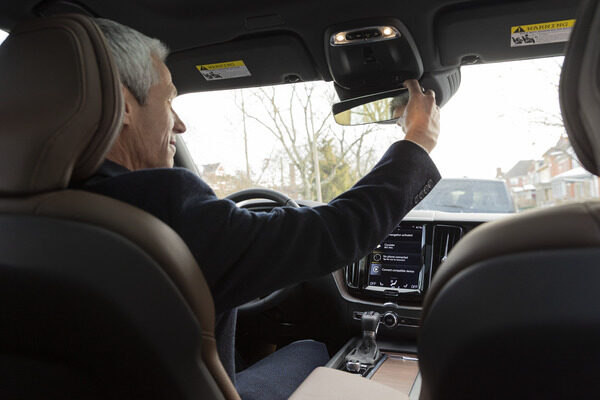
Parallel parking can be intimidating for even the most experienced drivers. The good news is that the process of maneuvering a vehicle between parked cars and parallel to the road gets easier with practice. Use our step-by-step guide and tips to feel more confident about parallel parking. [1]
1. Ensure that the parking space is large enough
Look for a space that’s at least 1 1/2 times as long as your vehicle, which will provide buffer room as you park. (More experienced drivers may be able to park with less room.) [2]
Double-check signs to be sure it’s a legal parking spot and confirm whether you need to pay for parking. [3]
2. Move your car up to the car parked in
Drive up next to the car you’ll eventually park behind, leaving 2 to 3 feet between the sides of the cars. Pull up until your rear-view mirror is aligned with the parked car’s rear-view mirror. [2]
3. Check your rearview and side mirrors
Double-check the adjustment of your mirrors before starting to back into the space, then scan the mirrors and your blind spot for pedestrians and vehicles. When you’ve confirmed that things are clear, you’re ready to put your vehicle in reverse. [1]
4. Reverse and turn the steering wheel to the right
As you back up, begin turning your wheel toward the curb. When your seat is lined up with the back of the vehicle you’re parking behind, smoothly and quickly turn the steering wheel to the opposite direction. Your goal is to have your vehicle at a 45-degree angle as you reverse into the parking space. [3]
5. Straighten the steering wheel and continue to reverse
Begin straightening the steering wheel when you’re most of the way into the space. A visual clue you can use is to start straightening the wheel once your front bumper is next to the rear bumper of the car you’re parking behind. As you do this, your vehicle will become positioned in the parking space. [3]
6. Check the distance between the parked cars and center your vehicle
Now that you’re in the space, check the distance between yourself and the car in front of you and behind you, and adjust forward or backward as needed to center your vehicle. Be sure to allow room for yourself and the other cars to pull out. [3]
Finally, once your vehicle is in place, if you’re parked on a hill or incline, turn your wheels toward the curb or at an angle that would guard against rolling into traffic. [2]
Tips for parallel parking
- Practice with cones: Using cones allows you to get comfortable with the size and shape of the average parking space without worrying about hitting another car. [1]
- Practice on quiet streets: Streets without much traffic or parking lots with plenty of open spots are great options for becoming more familiar with your vehicle’s size and the room you need to park without difficulty. [1]
Discover more driver safety
Our tips can help new drivers feel safe and comfortable on the road. Learn more about the important protection that auto insurance offers.
Sources:
[1] “How to Parallel Park: 10 Ridiculously Easy Steps,” driving-tests.org/beginner-drivers/how-to-parallel-park (Accessed November 2024).
[2] “How to Parallel Park for Beginners: Step-by-Step Guide,” zutobi.com/us/driver-guides/how-to-parallel-park (Accessed November 2024).
[3] “How to Parallel Park: Tips & Tricks for Smooth Parking,” Ibrahim Onerli and Hannah Madden, wikihow.com/Parallel-Park (Accessed November 2024).
Disclaimer:
The information included is designed for informational purposes only. It is not legal, tax, financial or any other sort of advice, nor is it a substitute for such advice. The information may not apply to your specific situation. We have tried to make sure the information is accurate, but it could be outdated or even inaccurate in parts. It is the reader’s responsibility to comply with any applicable local, state or federal regulations. Nationwide Mutual Insurance Company, its affiliates and their employees make no warranties about the information nor guarantee of results, and they assume no liability in connection with the information provided. Nationwide, Nationwide is on your side and the Nationwide N and Eagle are service marks of Nationwide Mutual Insurance Company. © 2025 Nationwide



